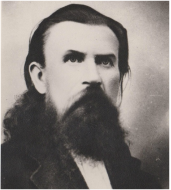|
In a post from March about a speech given by Mitt Romney, we looked through the Fractal Lens to understand how complexity theory could be applied to the vicissitudes of political parties:
"Looking through the Fractal Lens, we can envision and model the two political parties as the sand-pile models of complexity theory. Each party builds its sand-pile slowly and carefully, building issues upon issues and attracting supporters. But eventually the piles become too high, the positions to brittle or outdated and the supporters die off, leaving fragile structures that are prone to collapse as more grains of sand are dropped. Alternative candidates represent grains of sand that might fall away harmlessly off the pile or might cause avalanches. Changes do not come gradually or in an orderly manner, but in fits and starts. Both parties are subject to avalanches, but they often occur at different times. The Democratic Party experienced a series of them between 1968 and 1988, and was rarely unified. Even the one candidate they were able to elect in 1976 often clashed with the other leaders of his own party. They could not agree upon what issues were sacred and who were the scapegoats. This resulted in a situation that is not that dissimilar from the 2016 Republican campaign. In 1988, for example, the Democratic party had 14 candidates for president that included David Duke and Lyndon LaRouche. But by that time, the avalanches were beginning to subside and rebuilding of the Democratic pile could begin to occur. We saw a minor avalanche again in 1992 with the candidacy of Ross Perot, which affected the Republican side more than the Democrats. But, by contrast, the outsider candidacies of Pat Buchanan and Ron Paul did not cause serious avalanches for the GOP. Now we see a large avalanche occurring with the success of Donald Trump. Looking through the Fractal Lens, this has as much or more to do with the fragile state of the sand-pile as it does with the particular grain of sand that falls upon it." Recent events over this past weekend illustrate the sand-pile model and avalanche principle in action within the campaign itself. On Friday, October 6, a video and audio surfaced of Donald Trump making inappropriate comments about his past practices of groping women that was described in most reports as "lewd". This led within hours to an avalanche of denunciations by dozens of Republican lawmakers, many of whom are running for re-election. Once a few made it clear that they no longer would support Trump's candidacy, many others joined and made noisy exits. But was it the actual content of this particular revelation that was the primary reason for the avalanche at this point? Complexity theory says, "probably not". There are several other factors at play, two of which are highly pragmatic. First, most of these lawmakers want to be elected next month. They are very sensitive to their individual constituencies and do not wish to offend them or tarnish their own reputations. Second, they can read the polling data and it has shown that what appeared to be a very close race at the time of the first presidential debate two weeks ago has moved considerably against Donald Trump. So the likelihood that they would have to interact with him as President has declined substantially. In terms of the sand-pile model, these factors have made the Trump hill very unstable and prone to a collapse. Thus, any negative shock might have caused it -- a bad debate performance, a tax revelation or something like what actually occurred. The specific content of the event itself was not the main causal factor -- it was just another grain of sand being dropped. What mattered is that the Trump hill had reached a critical state. And once part of it began to slide, a large chunk of a supporting wall went down with it. So now what? Can the Trump pile be rebuilt? Will there be additional avalanches on that hill or on nearby GOP hills? Looking through the Fractal Lens, we do not see a guaranteed answer either way -- and we never do. What we can see is that -- like earthquakes and aftershocks -- such events often cluster. Therefore, the probability of further erosion or avalanches is much higher today than it was last week. Volatility has increased. But its only a probability, not a guarantee. When they write the history of this campaign, scholars may point to this event as "the moment" or "the game-changer", as if it was the content of the revelation that drove the narrative all by itself. Others will claim that it was "obvious" this campaign would meet such a fate. (The very fact that Donald Trump became the nominee ought to belie that argument -- improbable things do happen.) But these are ways of looking at the world that are lacking in wisdom, because its simply not that simple. It is the unpredictable confluence of causes in complex adaptive systems that really makes things happen -- not the sequence of individual events in a clean and viscerally attractive narrative as might be presented in a magazine article, a political pundit's post-hoc analysis or a history book.
0 Comments
Leave a Reply. |
I have always been curious about the way the world works and the most elegant ideas for describing and explaining it. I think I have found three of them. I was very fond of James Burke's Connections series that explored interesting intersections between ideas, and hope to create some of that magic here. Archives
February 2019
Categories
All
|

 RSS Feed
RSS Feed